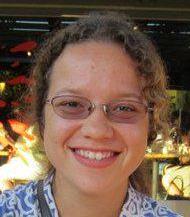Mycah Brazelton-Braxton
 The Body of Ink Painting: Total Expression in Hasegawa Saburō’s 1950s “Abstract Calligraphy”
The Body of Ink Painting: Total Expression in Hasegawa Saburō’s 1950s “Abstract Calligraphy”
Mycah Brazelton-Braxton, Harvard University
Hasegawa Saburō rose to prominence in the 1930s as a leading advocate of Surrealist abstraction and the “carnal body” of the art object. He defined this as the material physicality of artwork which, when freed through abstraction, becomes a site of universal creative expression. This paper will establish Hasegawa’s efforts to further his long-standing interest in Surrealist abstraction by breaking with tradition. After World War II, Hasegawa expanded his Surrealist practice to the medium of “abstract calligraphy” ink painting, inspired by his conviction in a deep resonance between Japan’s historic arts and Surrealism and his belief that Japanese Zen painting had come stunningly close to Surrealist practice. Eliminating intent through the embrace of chance and the physical materiality of ink, Hasegawa broke with key historical modes of ink painting. Now relieved of the burden of representing literal meaning, the artist could freely unleash the “anarchic energy of the interior.”